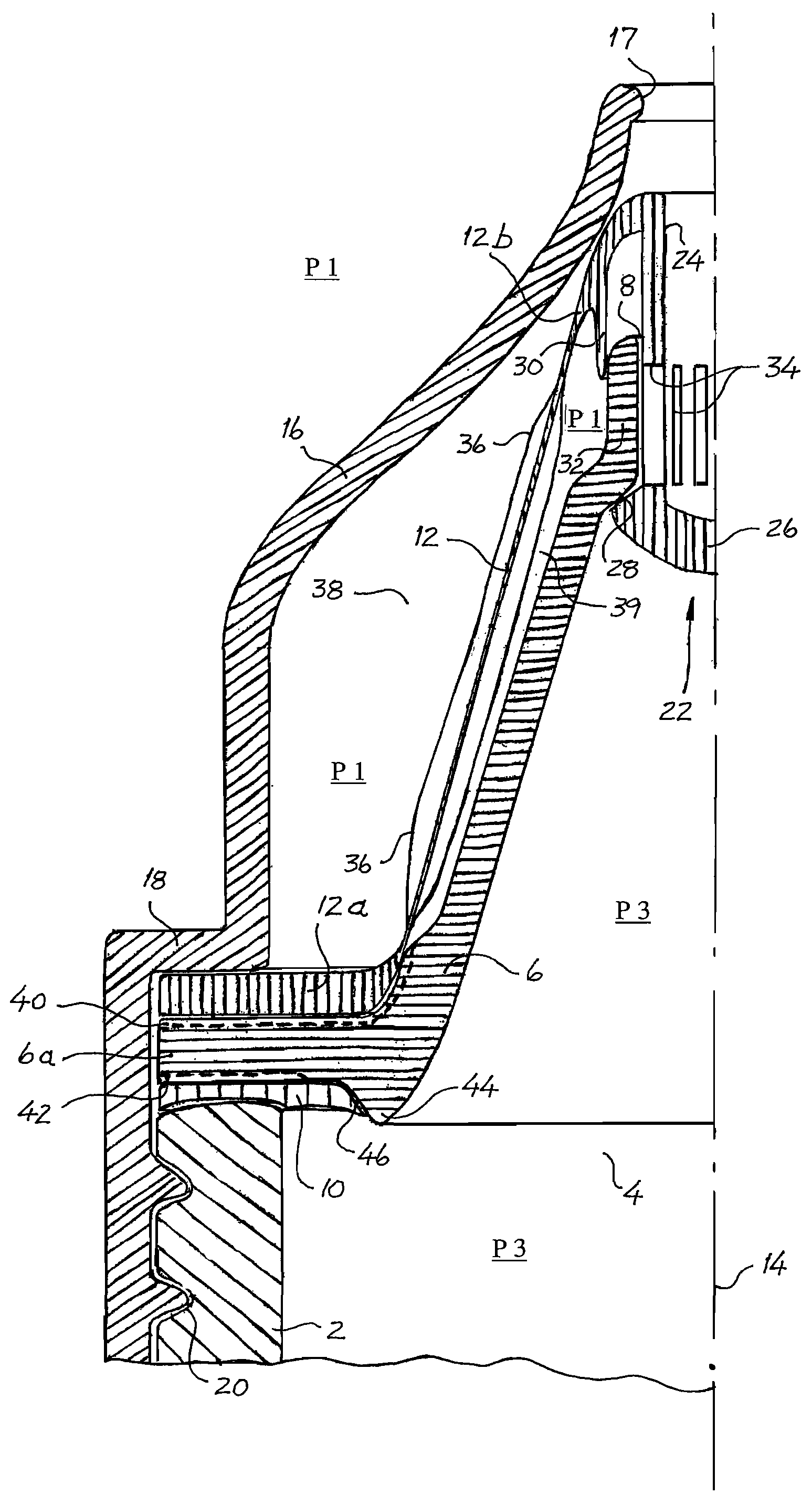Opening-force-maximizing device of an underpressure-activated valve for a drinking container
a technology of underpressure activation and opening force, which is applied in the direction of drinking vessels, tubular containers, functional valve types, etc., can solve the problems of disproportionate suction force, limited membrane diameter, and inability to solve, and achieve the effect of sufficient storage energy and certain resistance to radial deflection
- Summary
- Abstract
- Description
- Claims
- Application Information
AI Technical Summary
Benefits of technology
Problems solved by technology
Method used
Image
Examples
second embodiment
[0049]the valve device according to the invention is shown in FIG. 2a and FIG. 2b. Wherever possible, the same reference numerals have been used for like parts with the addition of the prefix “1”. Also this valve device is provided with a peripherally continuous, conically shaped membrane 112, which, as opposed to the previous membrane 12, is arranged for inward radial movement upon underpressure-activation. Therefore, the suction chamber 138 is placed on the inside of the membrane 112, whereas its pressure equalizing chamber 139 is placed on the outside thereof. The partition wall 106 is cylindrically shaped to allow the membrane 112 to move radially when activated. The admission of air into the suction chamber 138 takes place through radial venting grooves 140 formed on the outside of the attachment end 112a of the membrane 112. An axially movable sealing member 122 is connected to the maneuvering end 112b of the membrane 122. The sealing member 112 consists of a axially extending...
third embodiment
[0050]the valve device according to the invention is shown in FIG. 3a and FIG. 3b. Wherever possible, the same reference numerals have been used for like parts with the addition of the prefix “2”. Also this valve device is arranged for inward, radial movement and operates essentially in the same manner as the previous valve device. The device according to FIG. 3a and FIG. 3b, however, is provided with a membrane 212 consisting of a cylindrical membrane portion 260 proximate its attachment end 212a and a conical membrane portion 262 proximate its maneuvering end 212b, cf. FIG. 3a. To provide the membrane 212 with a desired deflection profile upon activation, it is provided with a peripheral bracing ring 264 positioned between said membrane portions 260, 262. FIG. 3b shows the membrane 212 activated and deflected inwards towards the valve axis 14. The cylindrical membrane portion 260 is deflected the most and provides the largest axial membrane contraction. The device is arranged with...
PUM
 Login to View More
Login to View More Abstract
Description
Claims
Application Information
 Login to View More
Login to View More - R&D
- Intellectual Property
- Life Sciences
- Materials
- Tech Scout
- Unparalleled Data Quality
- Higher Quality Content
- 60% Fewer Hallucinations
Browse by: Latest US Patents, China's latest patents, Technical Efficacy Thesaurus, Application Domain, Technology Topic, Popular Technical Reports.
© 2025 PatSnap. All rights reserved.Legal|Privacy policy|Modern Slavery Act Transparency Statement|Sitemap|About US| Contact US: help@patsnap.com



